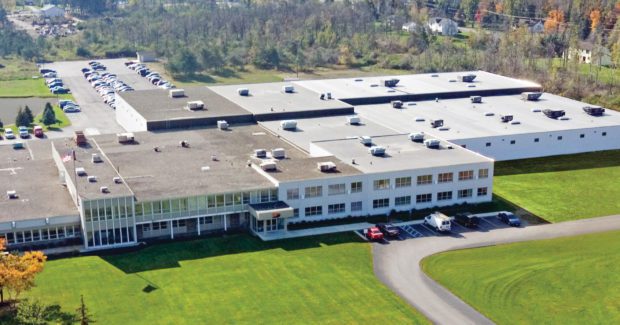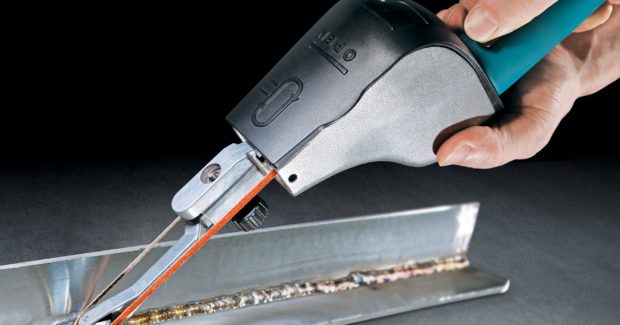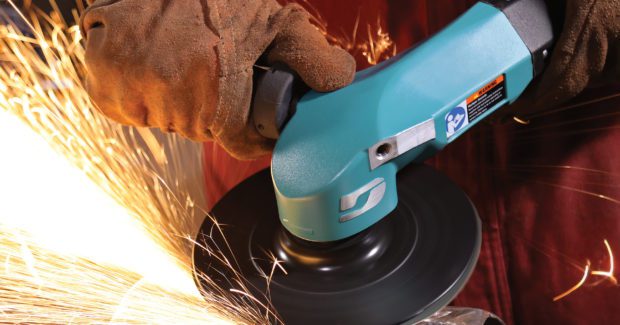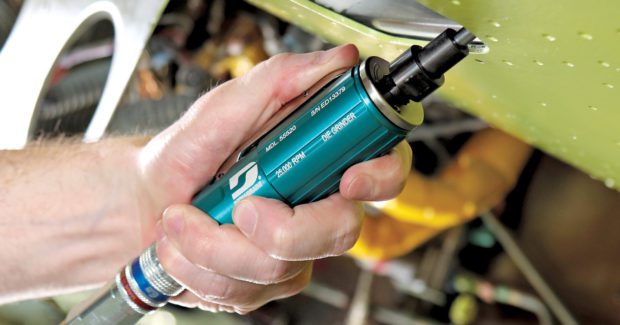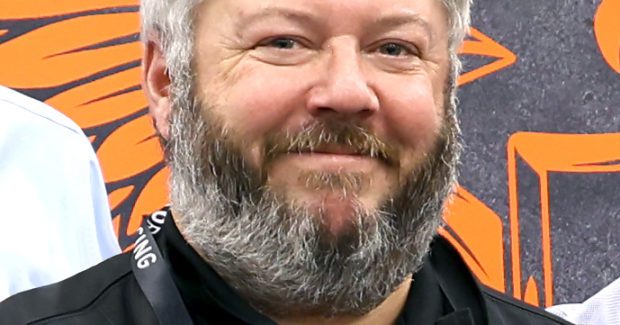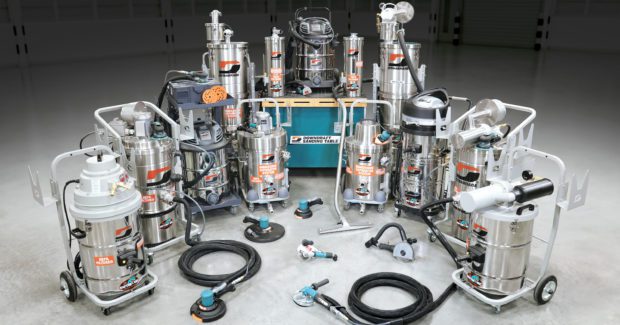Power Tools for Manufacturers: Dynabrade Keeps Pace with Industry
Dynabrade wants customers to think of the company as trusted advisers. The company is not just selling tools but is building long-term relationships and providing solutions to customers’ greatest challenges.
Posted: February 23, 2022
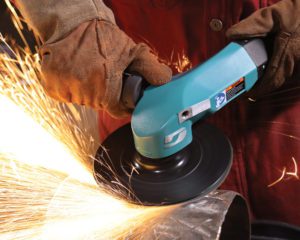
In 30 years at Dynabrade Inc., marketing manager Andy Mandell has observed this at his workplace: “The people at Dynabrade pride themselves on consistently coming out with new products, developing new tools, making upgrades to existing product lines.”
Dynabrade’s effort to innovate is reflected in its two main catalogs. First, there’s the 316-page catalog on the company’s abrasive power tools, their accessories and their abrasives.
In the catalog, there are sections on:
- abrasive belt tools
- abrasive finishing tools
- die grinders
- disc sanders
- grinders
- buffing tools
- drills
- random orbital sanders
- gear-driven and finishing sanders
- source capture systems, such as downdraft tables and vacuum shrouds
In addition, the catalog’s section on accessories consists of 47 pages. And its section on abrasives is 26-pages long.
Second, there’s the 128-page catalog on Dynabrade’s dust collection systems. This second catalog overlaps with the first catalog’s section on source capture systems. Both this catalog and that section include products like downdraft tables and vacuum shrouds. However, the second catalog presents much more information on the different types and divisions of Dynabrade vacuum systems.
Mandell himself joined Dynabrade in Clarence, NY, when the company was about to come out with one of its most successful products. In 1992, the company was developing its first random orbital sander, and was close to launching this new product.
As the new assistant marketing manager, Mandell took a look at the work done by the marketing department in support of the new sander and took his first measure of Dynabrade’s core group of employees: “I was just so amazed at the marketing program and the marketing plans that our management put together.”
He added that other parts of the launch were also ready: “We had dedicated salesmen in the field, we had a real robust co-op advertising program with our distributors, we offered no-obligation demonstrations.”
And after the launch? “The random orbital sander line just took off,” Mandell said. “It got to the point that we just could not make them fast enough.” He added: “It was wonderful to see that it was a big hit. It truly was a huge hit, and it is to this day.”
Since 1992: Growth
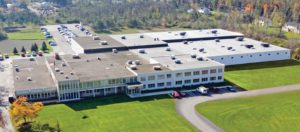
Coming out with new products has contributed to Dynabrade’s success. And a sign of that success is Dynabrade’s growth since those days in 1992. “When I started, we probably had a total of 50 employees,” Mandell said. “Now, we’re easily over 300.”
Although small in 1992, Dynabrade was already an international company. In 1989, it had opened an operation in Luxembourg. Dynabrade Europe S. à r.l. is in the town of Wormeldange-Haut and can serve the European market because of Luxembourg’s central location, located between France and Germany and sharing a border with Belgium.
Then, in 2007, Dynabrade opened a second international operation. Dynabrade India Abrasive Power Tools Pvt. Ltd. is in western India, near the port city of Mumbai. Specifically, the operation is in Navi Mumbai, a city in the Mumbai metropolitan area. Dynabrade India serves both the Indian and Asian markets.
“We are selling our products globally,” Mandell said.
Despite this growth, Mandell added that Dynabrade’s markets haven’t really changed since he joined the company. One thing that has changed, though, is how Dynabrade communicates information to its customers. (See A DIGITAL DYNABRADE below)
A Core Group
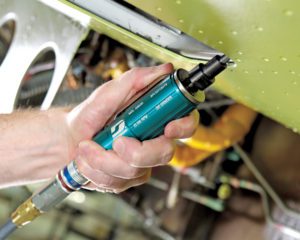
When Mandell joined the company, he noticed Dynabrade had a core group of employees whom he described as “passionate” and “hardworking” and “dedicated” to the company.
“It just amazed me that we had this group of core people that would do whatever it takes to get the job done,” Mandell added. “And we still do.”
Much of that group is reflected on Dynabrade’s wall of fame. The wall displays the names of people who’ve worked for Dynabrade for at least 25 years.
Not surprisingly, given the core group, Mandell described Dynabrade as having a “wonderful work environment,” a “real positive environment.” He added: “People here are always willing to help. It’s terrific.”
He said that Dynabrade also had a good leader in its founder, Walter Welsch. It was Welsch who committed Dynabrade to consistently launching new products. “He was passionate about that,” Mandell said, “passionate about satisfying the customer.”
Also, Welsch shared the company’s financial rewards. “He actually developed an ESOP,” Mandell said. Today, the company is co-owned by the Welsch family and by many Dynabrade employees. “Wally Welsch and the entire Welsch family have been very good to us, very good to us,” Mandell said.
Now, when there are good people, a good work environment, and good financial rewards, there will be retention. Mandell is an example. A 30-year employee, he has his name on Dynabrade’s wall of fame.
And with many employees being co-owners, their success is tied to the company’s success. And Dynabrade’s success depends in part on continuing to come out with new products and on keeping pace with changes in industry.
Compatible with Robotics
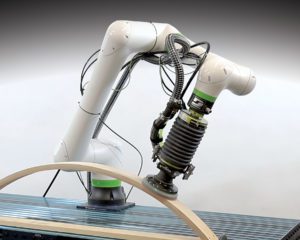
In recent years, the company has been keeping pace with manufacturing through a project aimed at effecting one change across Dynabrade’s tool lines.
“What we have started and what we are in the process of achieving, is developing a line of air tools for use with robotics,” Mandell said.
The effort is due to a problem that’s widespread in manufacturing, a problem made worse by the COVID-19 pandemic: a shortage of workers. Mandell provided an example of this shortage, a company that doesn’t have enough workers to sand its kitchen cabinet doors. To make up for the shortage, the company considers robotic technology.
To use the technology, though, the company needs sanders that are compatible with the robotic arms. That’s where Dynabrade’s effort comes into play. “We develop the random orbital sander for use with the robotic technology to sand the products,” Mandell said.
To ensure compatibility: “We’ve developed relationships with robotic-arm manufacturers to make our tools compatible with their robotics line,” Mandell added. While the example involved random orbital sanders, Dynabrade’s efforts include all of its tool lines: grinders, disc sanders, cut-off tools.
Mandell added that Dynabrade has been working with robotic-arm manufacturers for about two years and that the work toward compatibility is progressing: “All the robotic manufacturers that we’ve been working with so far, it’s all been quite positive. It takes a lot of work, but it’s coming along nicely.”
Mandell said he expected that increased use of robotics would be both a short-term change and a long-term change in the manufacturing industry, so Dynabrade would respond with: “A continuation in development of robotic air tools.”
To that end, when Dynabrade introduces a new tool these days, it’s already compatible with robotic technology. “It’s called plug-and-play technology,” Mandell said. “Some robotic manufacturers have very easy ways to attach the Dynabrade air tool to the robotics.”
To prove its products, Dynabrade offers demonstrations at its locations and at customers’ locations. It offers training, too. Dynabrade also has a ‘try before you buy’ policy. Customers can try Dynabrade tools for a few days before buying them. If the customer decides a tool isn’t right for an application, it simply returns the tool to Dynabrade.
Cleaning the Air
In recent years, Dynabrade has also been keeping pace with government. “They’ve been calling on different manufacturers in regard to eliminating dust for the workers,” Mandell said. “Over the past couple of years, we’ve expanded our vacuum tools, our portable vacuum systems and downdraft table technology, both for dry and wet vacuums for use with metalworking to achieve a dust-free environment.”
Mandell added that the government’s call for less dust is for good purpose: “Make the work environment safer for the operator.”
Heavy-Duty Grinding
“We’re also in the process of developing heavy-duty air tools for use in foundries and shipyards,” Mandell said, “tools that can take heavy, mechanical abuse.”
In foundries, Dynabrade’s focus is on heavy-duty grinding of castings.
In shipyards, the company’s focus is also on heavy-duty grinding, whether it’s needed when a ship is being built or when a ship is being maintained. “We have a line of two-horsepower heavy-duty grinders that we just came out with,” Mandell said. He added that to ensure the grinders work well with various abrasives and grinding wheels: “We also developed relationships with abrasive manufacturers.”
Being Trusted
“We develop relationships,” Mandell said. “We’re not just selling the tools.”
To that end, Dynabrade looks at more than the tools and abrasives used at a workstation. The company will look at the tools’ air lines, at the compressors, at dust collection, at the ergonomics of the workstation.
Mandell added that among its customers, Dynabrade would like to be viewed as: “Trusted advisers, so to speak.”
To show what he meant, Mandell provided a recent example from a customer. The company was having trouble grinding a stainless-steel box. Employees tried different solutions without success. Finally, they contacted Dynabrade.
The company’s problem was it didn’t have a tool that could reach into and grind a tight corner of the box. “So, we took one of our existing abrasive-belt tools and changed the contact arms on it for them,” Mandell said. “It worked perfectly.”
With the right tool in place, Dynabrade then helped complete the solution. “Pairing that up with the correct abrasive, and you come up with a satisfied customer.”
Afterward, Mandell learned why the employees finally contacted Dynabrade: Their boss told them to. Dynabrade found out from the boss himself. Mandell said that the fellow later contacted Dynabrade, mentioned the past problem, and mentioned the solution he gave to his workers: “‘Call Dynabrade. Just call them.’”
“That was a wonderful compliment,” Mandell said. “We took care of them.”
A Digital Dynabrade
In 1992, Andy Mandell joined Dynabrade as its new assistant marketing manager. Back then, the Internet Age hadn’t started; information was communicated much differently.
For example, in Dynabrade’s marketing department, Mandell and his co-workers created the company’s magazine ads on film, then mailed the film. Today, the department creates the ads digitally, saves them as PDFs, and emails them.
“We don’t use U.S. mail,” Mandell said. “You don’t see faxes anymore.”
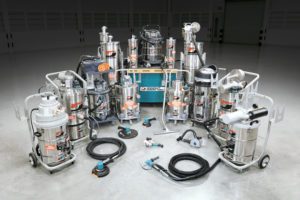
Today, a customer interested in die grinders doesn’t need to phone Dynabrade and request a product brochure by fax or mail. The customer can go to the Dynabrade website and obtain the information there. “We’re basically sending information in real-time,” Mandell said.
Of course, no internet means no smartphones. So, in the past, at a trade show, a customer wanting information on a random orbital sander could take a product brochure from a Dynabrade booth.
Today: “I can take out my cell phone, ask him for his email address or his cell phone number, and send it to him instantaneously,” Mandell said. “And then we could also provide information regarding our Dynabrade salesman in his area, a local distributor who sells our products. If he wants more than one distributor, we can give him his choice within a 50-mile radius.”
Mandell also said: “We can take photographs of his application problems, and we can send it to our salesmen or our tool experts and make recommendations on which tool to use.”

